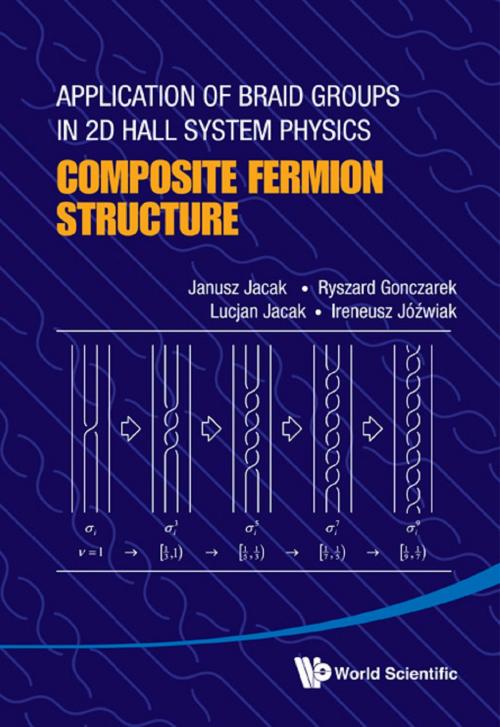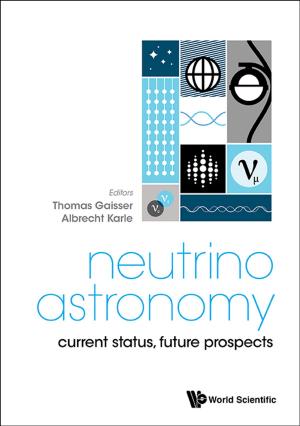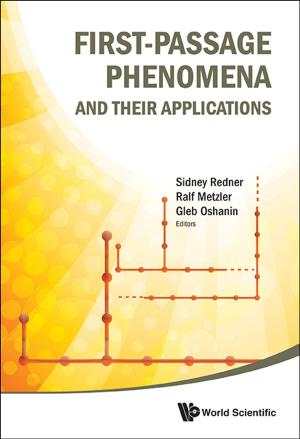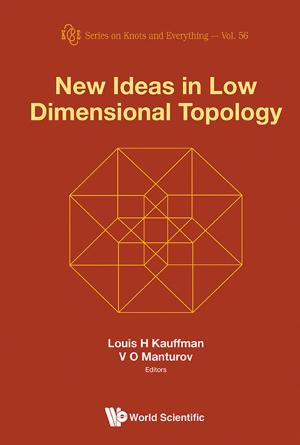Application of Braid Groups in 2D Hall System Physics
Composite Fermion Structure
Nonfiction, Science & Nature, Science, Physics, Solid State Physics, Quantum Theory| Author: | Janusz Jacak, Ryszard Gonczarek, Lucjan Jacak;Ireneusz Jóźwiak | ISBN: | 9789814412049 |
| Publisher: | World Scientific Publishing Company | Publication: | July 13, 2012 |
| Imprint: | WSPC | Language: | English |
| Author: | Janusz Jacak, Ryszard Gonczarek, Lucjan Jacak;Ireneusz Jóźwiak |
| ISBN: | 9789814412049 |
| Publisher: | World Scientific Publishing Company |
| Publication: | July 13, 2012 |
| Imprint: | WSPC |
| Language: | English |
In the present treatise progress in topological approach to Hall system physics is reported, including recent achievements in graphene. The homotopy methods of braid groups turn out to be of particular convenience in order to grasp peculiarity of 2D charged systems upon magnetic field resulting in Laughlin correlations. The real progress in understanding of structure and role of composite fermions in Hall system is provided. The crucial significance of carrier mobility apart from interaction in creation of the fractional quantum Hall effect (FQHE) is described and supported by recent graphene experiments. Recent progress in FQHE field including topological insulators and optical lattices was reviewed and commented in terms of braid group approach. The braid group methods are presented from more general point of view including proposition of pure braid group application.
Contents:
- Introduction
- Elements of Hall System Physics in 2D Spaces
- Topological Methods for the Description of Many Particle Systems at Various Manifolds
- Cyclotron Braids for Multi-Particle-Charged 2D Systems in a Strong Magnetic Field
- Recent Progress in FQHE Field
- Summary
- Comments and Supplements
Readership: Advanced undergraduate and the graduate students of advanced quantum mechanics and topological methods, application of algebraic topology.
Key Features:
- The first explanation of the origin of Laughlin correlations in 2D charged systems with sufficiently strong magnetic field. Formal, self-consistent mathematical model of originally defined cyclotron braid group is given in order to fully describe fundaments of fractional quantum Hall effect, retrieve Laughlin correlations and point physical conditions which stand behind mysterious composite fermion structure
- Explanation of the structure of composite fermions. The monograph describes a complete novel implementation of composite fermion based on first principles, without involving any artificial constructions (with flux-tubes or vortices). This approach can lead to some corrections of numerical results in energy minimalization made upon the traditional formulation of composite fermion model
- Identification of relations of FQHE in cyclotron braid terms with newly developing area of topological insulators and optical lattices. Description, in terms of cyclotron braid subgroups, of the nature of yet unexplained novel experiments in Hall 2D systems including graphene is given
In the present treatise progress in topological approach to Hall system physics is reported, including recent achievements in graphene. The homotopy methods of braid groups turn out to be of particular convenience in order to grasp peculiarity of 2D charged systems upon magnetic field resulting in Laughlin correlations. The real progress in understanding of structure and role of composite fermions in Hall system is provided. The crucial significance of carrier mobility apart from interaction in creation of the fractional quantum Hall effect (FQHE) is described and supported by recent graphene experiments. Recent progress in FQHE field including topological insulators and optical lattices was reviewed and commented in terms of braid group approach. The braid group methods are presented from more general point of view including proposition of pure braid group application.
Contents:
- Introduction
- Elements of Hall System Physics in 2D Spaces
- Topological Methods for the Description of Many Particle Systems at Various Manifolds
- Cyclotron Braids for Multi-Particle-Charged 2D Systems in a Strong Magnetic Field
- Recent Progress in FQHE Field
- Summary
- Comments and Supplements
Readership: Advanced undergraduate and the graduate students of advanced quantum mechanics and topological methods, application of algebraic topology.
Key Features:
- The first explanation of the origin of Laughlin correlations in 2D charged systems with sufficiently strong magnetic field. Formal, self-consistent mathematical model of originally defined cyclotron braid group is given in order to fully describe fundaments of fractional quantum Hall effect, retrieve Laughlin correlations and point physical conditions which stand behind mysterious composite fermion structure
- Explanation of the structure of composite fermions. The monograph describes a complete novel implementation of composite fermion based on first principles, without involving any artificial constructions (with flux-tubes or vortices). This approach can lead to some corrections of numerical results in energy minimalization made upon the traditional formulation of composite fermion model
- Identification of relations of FQHE in cyclotron braid terms with newly developing area of topological insulators and optical lattices. Description, in terms of cyclotron braid subgroups, of the nature of yet unexplained novel experiments in Hall 2D systems including graphene is given















